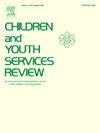“Like shooting fish in a barrel:” recruitment into sex trafficking in emergency shelters for youth experiencing homelessness
IF 1.7
2区 社会学
Q1 FAMILY STUDIES
引用次数: 0
Abstract
Youth experiencing homelessness often possess a ‘perfect storm’ of risk factors which traffickers exploit to lure and recruit them into sex trafficking. Despite this, little research has investigated how to prevent youth experiencing homelessness from being trafficked, including in the spaces that are meant to provide respite to them, such as emergency shelters. This paper utilizes findings from 23 semi-structured interviews with survivors of sex trafficking to investigate how and why the experience of homelessness among young people increases their vulnerability to being trafficked and how service providers can reduce the risk of this happening. The results show that traffickers actively target youth experiencing homelessness in shelters by posing as residents, sending others inside to pose as residents and loitering in the areas outside shelters to find potential victims. Qualitative analysis yielded two central themes that, when combined, make shelters attractive and effective spaces for traffickers: individual-level targeting factors among young people and elements of the emergency shelter system. The individual-level factors identified were isolation and loneliness, the need for safety, a lack of basic needs and the experience of homelessness. The emergency shelter factors included large physical spaces with numerous residents, a lack of staff training and awareness, the staff’s demeanour and approach, and various policies and procedures that have unintentional consequences. Mindfully designing and monitoring the spaces, policies and procedures within emergency shelters, and ensuring staff are trauma-informed and trained on the issues of sex trafficking can mitigate the risk of traffickers luring young people onsite. Interventions that support socio-economic inclusion and create supportive relationships with family and communities of belonging should be prioritized by service providers.
“就像在桶里射鱼”在无家可归的青少年紧急避难所招募性交易人员
无家可归的青年往往具有“完美风暴”的危险因素,人口贩运者利用这些因素引诱和招募他们从事性贩运。尽管如此,很少有研究调查如何防止无家可归的青年被贩运,包括在旨在为他们提供喘息机会的空间,如紧急避难所。本文利用对性交易幸存者进行的23次半结构化访谈的结果,调查了年轻人无家可归的经历如何以及为什么会增加他们被贩运的脆弱性,以及服务提供者如何降低这种情况发生的风险。结果显示,人贩子积极地把目标对准那些在收容所里无家可归的年轻人,他们冒充居民,让其他人进去冒充居民,然后在收容所里外面的地方闲逛,寻找潜在的受害者。定性分析得出了两个中心主题,这两个主题结合起来,使庇护所对贩运者具有吸引力和有效的空间:青年中的个人层面的目标因素和紧急庇护所系统的要素。确定的个人层面因素是孤立和孤独、对安全的需要、缺乏基本需求和无家可归的经历。紧急避难所的因素包括居住着许多居民的巨大物理空间、工作人员缺乏培训和意识、工作人员的举止和做法,以及产生意想不到后果的各种政策和程序。认真设计和监测紧急庇护所内的空间、政策和程序,并确保工作人员了解性贩运问题的创伤和培训,可以减轻贩运者在现场引诱年轻人的风险。服务提供者应优先考虑支持社会经济包容和与家庭和所属社区建立支持性关系的干预措施。
本文章由计算机程序翻译,如有差异,请以英文原文为准。
求助全文
约1分钟内获得全文
求助全文
来源期刊

Children and Youth Services Review
Multiple-
CiteScore
6.30
自引率
6.10%
发文量
303
期刊介绍:
Children and Youth Services Review is an interdisciplinary forum for critical scholarship regarding service programs for children and youth. The journal will publish full-length articles, current research and policy notes, and book reviews.
 求助内容:
求助内容: 应助结果提醒方式:
应助结果提醒方式:


